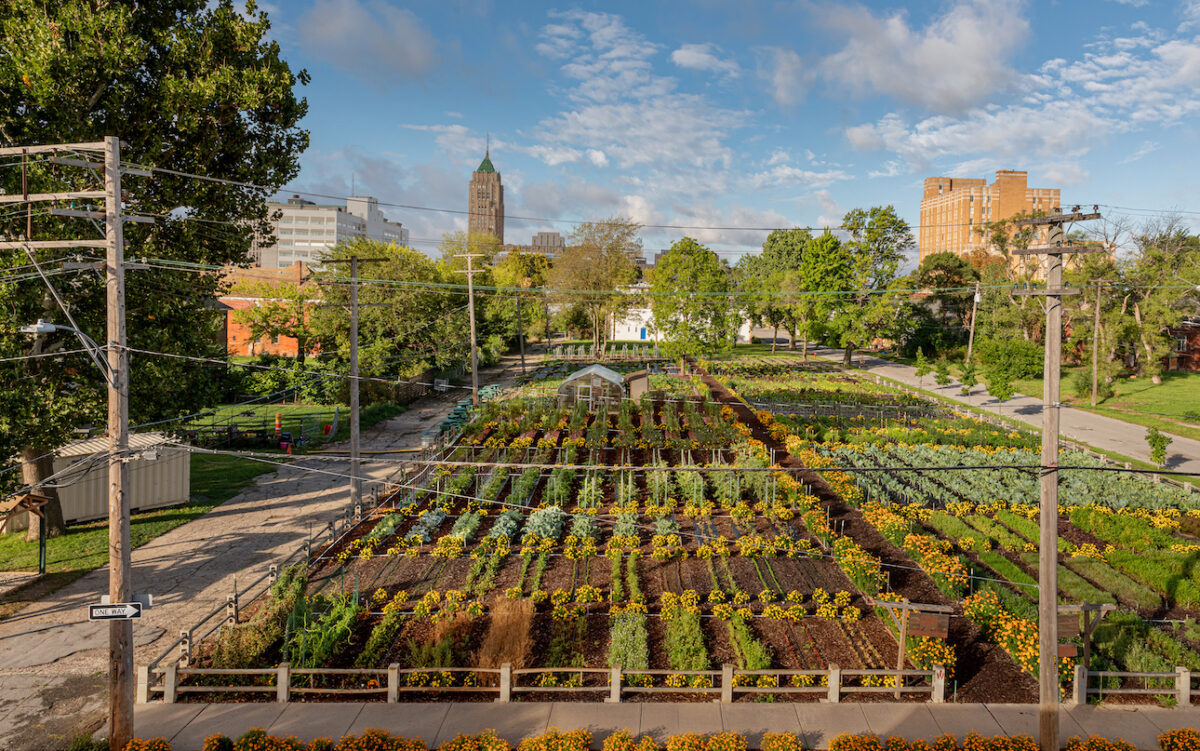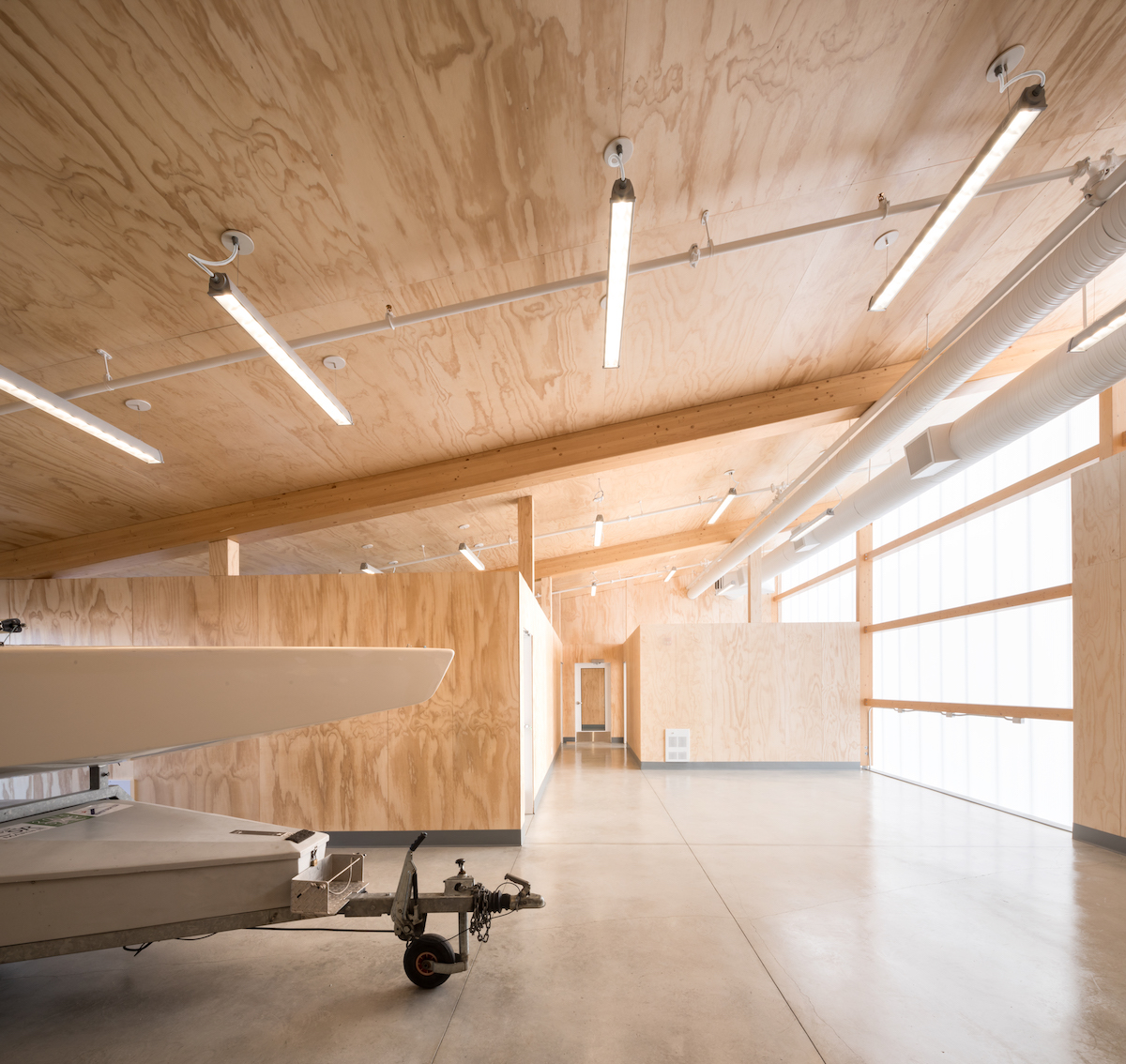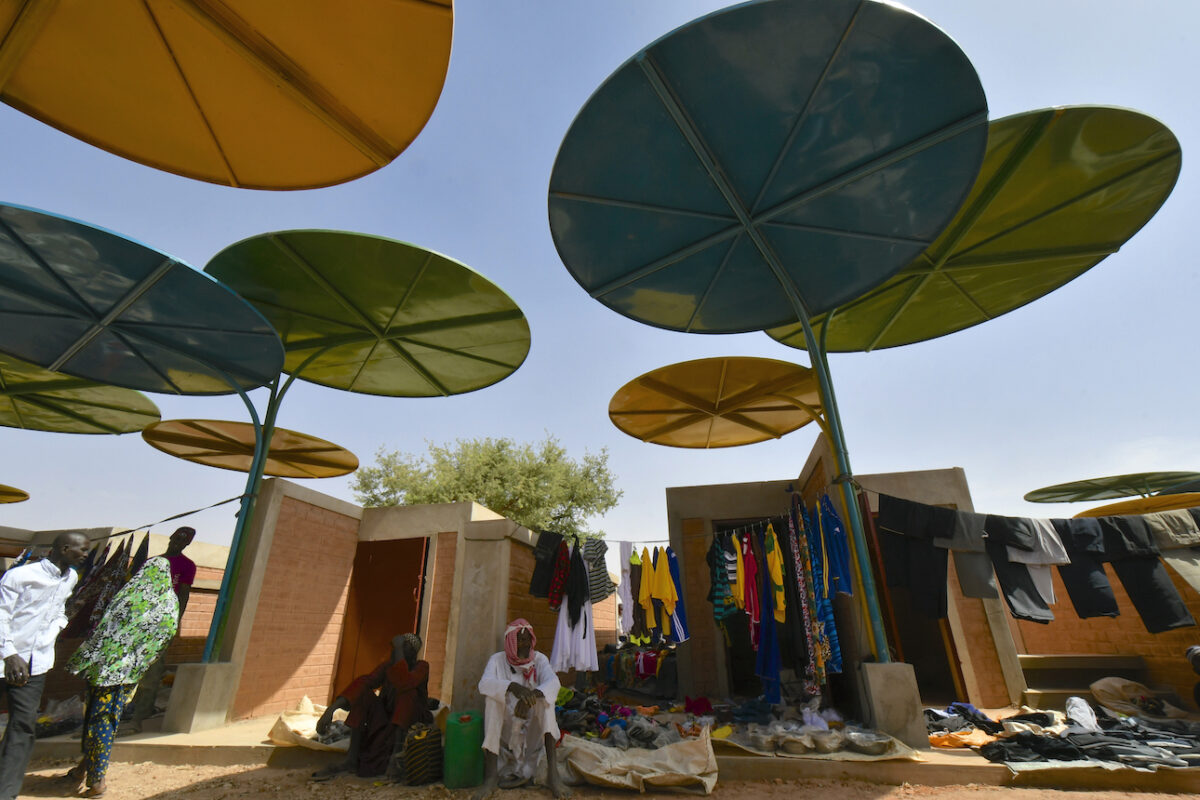A new book showcases projects that contribute to more inclusive, sustainable and desirable cities. But does its optimism tackle the scale of the problem?

Words by Athlyn Cathcart-Keays
Texas is currently under a blanket of snow, and peat is still burning in Arctic Russia after historic forest fires last summer, despite temperatures of -50 celsius. There are no two ways about it: our climate is in crisis, and it’s cities, where the majority of the world’s population resides, that will bear the brunt.
By 2050, 1.6bn urban dwellers will be exposed to extreme temperatures, 570 coastal cities are at risk of extreme sea level rise or flooding, and one in four people on Earth will be living in cities where the availability of food will be majorly impacted by climate change. We’re at a crossroads, and either we can continue in this direction or we take action and steer away from this abysmal future.
The Ideal City, a new book from Copenhagen-based research and design lab SPACE10 and gestalten, showcases projects aiming to build better urban environments and address issues like these, while creating more equitable conditions for residents. When I first heard about it, my initial thought was: this is nothing new – and we don’t need another design book showcasing greenwashed skyscrapers or piste-topped waste incinerators.

Thankfully, The Ideal City strikes a balance between featuring the eye-catching design projects you might expect in a book like this while also giving space to smaller initiatives working at a grassroots level, though there could be more of the latter.
Presenting a compendium of projects, from city-wide masterplans to community micro-actions, from the smallest bee homes to the world’s largest air-purifying skyscraper, we’re guided through thematic chapters and essays on projects to make cities more accessible, desirable, resourceful, shared and safe – five qualities the researchers see as the ‘ingredients’ to an ideal city.
Projects include Michael Green’s timber towers, which are sequestering carbon in Vancouver, Prince George and Minneapolis. Green’s work shows that respect for nature is paramount, and that design needs purpose to serve both people and planet in equal measure.

In Copenhagen, architecture practice Tredje Natur (Third Nature) is testing out the Climate Tile – a water-management system that collects and stores rainwater to reduce stress on the city’s drainage system, which couldn’t handle extreme rainfall in 2011. And in Harbin, landscape studio Turenscape has created an 84-acre ‘sponge park’ to reduce flooding, cool the city, and create a new leisure space.
In Detroit, a city with a rich tradition of community gardens, the Michigan Urban Farming Initiative is empowering communities and promoting education through urban agriculture, while growing and delivering produce to more than 2,000 households in the local area without charge. It is in the projects like these that I feel the most hope lies – community-led initiatives striving for change at a micro level, powering ahead with local solutions while governments stall on the top-down actions that are so urgently needed.
The scale of the climate crisis makes it easy to feel powerless and despondent, but the book gives hope to the battle and presents a multitude of tools that could be harnessed and adapted by leaders across the globe to inspire action towards greener and more equitable urban environments.

Covering projects from 53 cities in 30 countries, there’s certainly no one-size-fits-all approach when it comes to planning for the future. But what the Ideal City offers is a sense of optimism, its featured initiatives united by a shared idealism that if we work together, another world is possible.
Throughout hopeful pages, we’re reminded that the future of cities will not be shaped by governments, policy-makers, architects or urban designers, but by the coming together of millions of engaged citizens who buoy up their communities in a patchwork of solutions that will keep us afloat.
















